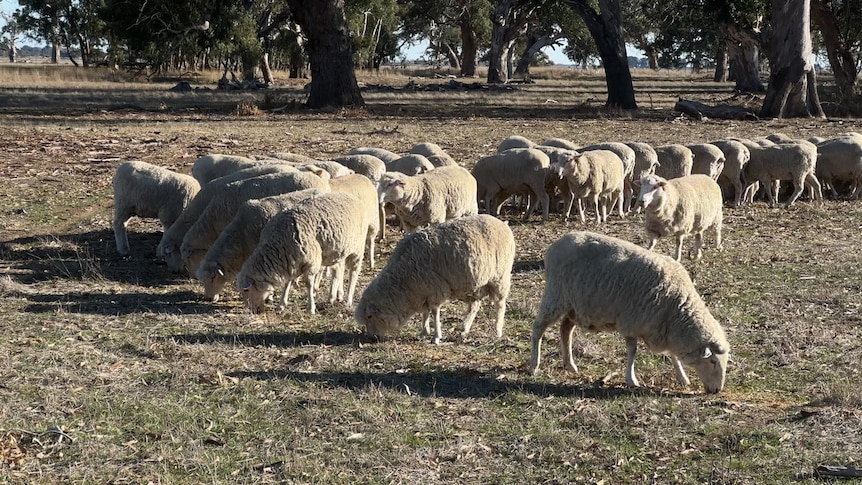Australia Weather News

Farmers across southern SA are feeding sheep hay and grain. (ABC South East SA: Eugene Boisvert)
All of South Australia's agricultural areas are in a severe drought, with many locations receiving record-low rainfall over the past 12 months.
The Mid North and the upper Eyre Peninsula have had the least rainfall and the majority of the record lows, although no place in the southern part of the state is unaffected, according to data from the Bureau of Meteorology.
While farmers were able to harvest a good crop in 2024–25 because of sub-soil moisture from previous wet years, the ground is now bone dry.
The Mid North town of Snowtown received a record-low amount of rain in 2024, and over the past 12 months the figure is even lower at 209 millimetres.
Only 26mm has been recorded at the town's weather station since the start of the year.
Snowtown sheep and mixed cropping farmer Andrew Michael has seeded in the hope of rain coming.
"We have no sub-soil moisture left, which has got us through now for the last two-and-a-half [years] prior to this … but the loss if we don't get a grain year will be a massive impact," he said.
His family also owns properties in Meningie and Willalooka, in the South East, which have also recorded extremely low rainfall.
"It makes it really difficult when you set up your best business plan to have a farm in different areas and a season like this brings it undone," Mr Michael said.
Part of long-term trend
Bureau of Meteorology senior climatologist Jonathan Pollock said South Australia's drought was not particularly long-lasting or widespread like the 1997–2009 millennium drought, but it was quite deep.
"It certainly is record-breaking in the sense that for a lot of the agricultural areas they have never seen a 16-month period from February to the following year's May with rainfall this low — and that's looking at data going all the way back to 1900," Mr Pollock said.
He said it was caused by the atmosphere above the state being dominated by slow-moving high-pressure systems rather than cooler systems that brought rain with them.
"Part of the reason why is we've seen a shift towards drier conditions across south-eastern Australia in recent decades and we're seeing more frequent periods of below-average rainfall and especially for the cool-season months from April through to October," he said.
"This is due to a combination of natural variability on longer timescales but also changes in the large-scale atmospheric circulation largely driven by an increase in greenhouse gas emissions."
The bureau's latest seasonal climate summary says the mean temperature across South Australia in autumn was 21.3 degrees Celsius, or 1.75C above the 1961–1990 average and the third warmest on record for all autumns since 1910.
Success despite challenges
Better farming practices that make the most of sub-soil moisture led to a 5.2-million-tonne grain harvest in 2024–25.
That was 40 per cent below the five-year average but 80 per cent above what was reaped in 2006–07 — another drought year.
Department of Primary Industries and Regions (PIRSA) general manager for industrial partnerships and intelligence Matthew Palmer said the productivity increase over the past 20 years was "quite remarkable and a testament to producers and the research and development that supports the grains industry".
"It's certainly been a very challenging season and it continues to be, but the result overall is quite remarkable compared with what would have happened in droughts in years gone by," he told the South Australian Country Hour.
Ninety-year-old Vic Smith has kept rainfall records in Nangwarry since 1985, when he moved to the town to work at the timber mill.
He recorded 102mm of rain until the end of May — similar to last year but about half the normal amount.
He said he was worried about the conditions of plantation forests.
"It's dangerously dry," Mr Smith said.
Mr Smith started calling into the ABC in 1999 to report his rainfall records while at the same time promoting the Nangwarry Forestry Museum where he volunteered until last year.
He has not given up his habit despite retiring.
"It's something you can look back on and compare year by year, which I do. And, if I hadn't have done that, I wouldn't have realised how much drier it was this year than other years," he said.
ABC